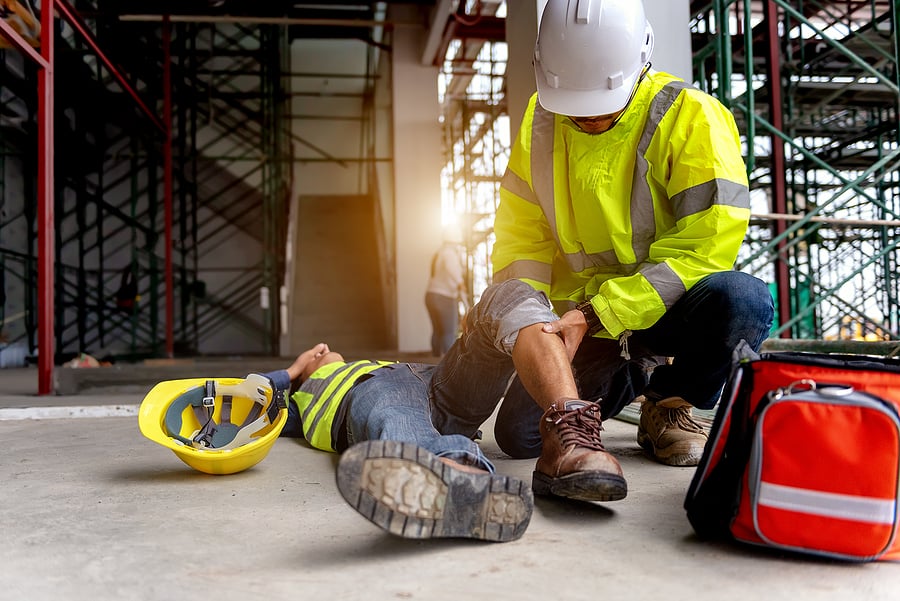Investigating Accidents, Incidents And Near Misses
If you think safety is expensive, try an accident
Just like any other business KPI, health and safety has to be monitored to establish a degree of success. You need active, regular inspections and checks in place to ensure that standards are being implemented and management controls are working properly before things go wrong. You also need a reactive investigation process to address failures in health and safety performance when things do go wrong. This will involve learning from mistakes, whether they result in accidents, ill-health, property damage incidents or 'near misses'.
Carrying out your own health and safety investigations is an important tool in developing and refining your risk management system, providing you with a deeper understanding of the risks associated with your work activities. Findings from incident, accident or near miss investigations should form the basis of action to prevent it from happening again. It will also improve your risk assessments if the investigation reveals an unperceived potential hazard. If an investigation is going to be effective it needs a methodical, structured approach to information gathering, collation and analysis.
Accidents and incidents are both important
It is often pure luck that determines whether an incident or near miss translates into an accident. The value of investigating each adverse event is the same. As well as being very useful, investigating near misses and undesired circumstances can be much easier than investigating accidents. If no one has been harmed you don’t have to deal with injured parties, a defensive, demoralised workforce or the threat of criminal and civil action hanging over the whole proceedings. Witnesses will be more likely to be helpful and tell the truth. It is the potential consequences and the likelihood of the adverse event recurring that should determine the level of investigation, not simply the injury or ill health suffered on this occasion.
Why do you need to investigate?
Health and safety investigations form an essential part of the monitoring process that you are required to carry out. Incidents, including near misses, can tell you a lot about the realities of how people are working.
- Investigating your accidents and reported cases of occupational ill health will help you uncover and correct any breaches in health & safety legal compliance you may have been unaware of.
- The fact that you thoroughly investigated an incident and took remedial action to prevent further occurrences would help demonstrate to a court that your company has a positive attitude to health and safety.
- Your investigation findings will also provide essential information for your insurers in the event of a claim.
In workplaces where a trade union is recognised, appointed health and safety representatives have the right to:
- investigate potential hazards and dangerous occurrences in the workplace;
- examine causes of workplace accidents.
The Legislation
Accident Investigation is a legal business requirement. The Management of Health and Safety at Work Regulations 1999, regulation 5, requires employers to plan, organise, control, monitor and review their health and safety arrangements. Health and safety investigations form an essential part of this process. Following the Woolf Report on civil action, you are expected to make full disclosure of the circumstances of an accident to the injured parties considering legal action. The fear of litigation may make you think it is better not to investigate, but you can’t make things better if you don’t know what went wrong! The fact that you thoroughly investigated an accident and took remedial action to prevent further accidents would demonstrate to a court that your company has a positive attitude to health and safety. Your investigation findings will also provide essential information for your insurers in the event of a claim.
Summary
An investigation can help you identify why the existing risk control measures failed and what improvements or additional measures are needed. It can:
- provide a true snapshot of what really happens and how work is really done (workers may find short cuts to make their work easier or quicker and may ignore rules – you need to be aware of this);
- improve the management of risk in the future;
- help other parts of your organisation learn;
- demonstrate your commitment to effective health and safety and improving employee morale and thinking towards health and safety. Investigating near misses and undesired circumstances, where no one has been harmed, is as useful as, and may be easier than, investigating accidents.
HSE Guidance
HSG245 Investigating accidents and incidents: a workbook for employers, unions, safety representatives and safety professionals
About Lisa Robinson
Lisa - word smith to the gods.

